The healthcare challenge is becoming acute as the 65+ population grows three times faster than younger cohorts and a global shortage of 11 million healthcare workers looms.1 This imbalance creates inefficiencies across the system. Healthtech solutions provide a critical bridge between surging demand and constrained supply. While meaningful change can feel frustratingly slow from a patient’s perspective, with innovations taking years or decades to reach clinical practice, substantial progress in the healthcare knowledge base can now occur within much shorter timeframes due to technological advances and accelerated research.
In parallel, AI-enabled drug discovery is revolutionizing R&D, with a 122% compound annual growth rate projected through 2032, and smart medical devices and surgical robots continue to enhance precision and efficiency.2 This technological transformation allows for the creation of powerful collective intelligence networks, improving usability for patients and caregivers.
Smart Solutions for an Overburdened Healthcare System
Healthcare faces a perfect storm of challenges. Beyond the issues arising from a rapidly aging population, 35% of physicians indicate they likely plan to leave their current roles within five years, while an estimated 900,000 registered nurses could leave the profession by 2027.3
Outdated technology and operational solutions exacerbate these problems. Physicians spend 39% of their time documenting patient information in electronic medical records (EMRs), with 78% reporting burnout and fatigue related to working with health IT systems.4 Healthcare’s technological renaissance aims to address these challenges, while creating a $1.1 trillion market opportunity propelled by four distinct yet interconnected digital solutions: AI-enabled drug discovery, smart medical devices, tech-enabled consumer care, as well as healthcare analytics and software solutions.5
HealthTech Market Size6
122% CAGRUsing AI to predict drug interactions, analyze molecular data, and identify new treatments.
12% CAGRAI-powered medical hardware including wearables and surgical robotics that enhance patient outcomes.
17% CAGRData analysis and automation tools that optimize clinical workflows and administrative processes.
18% CAGRSolutions that improve access to care through virtual services, remote monitoring, and online pharmacies.
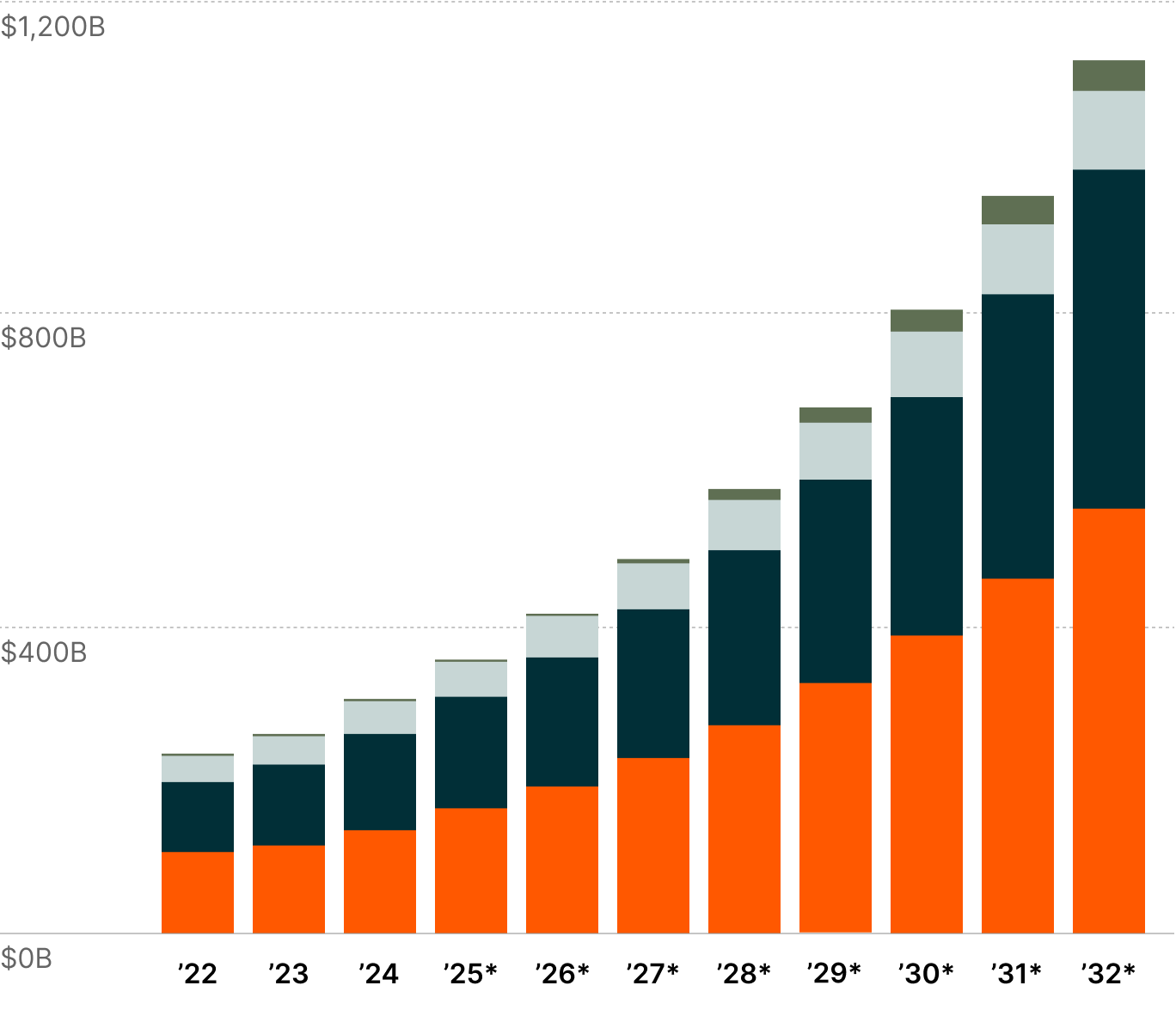
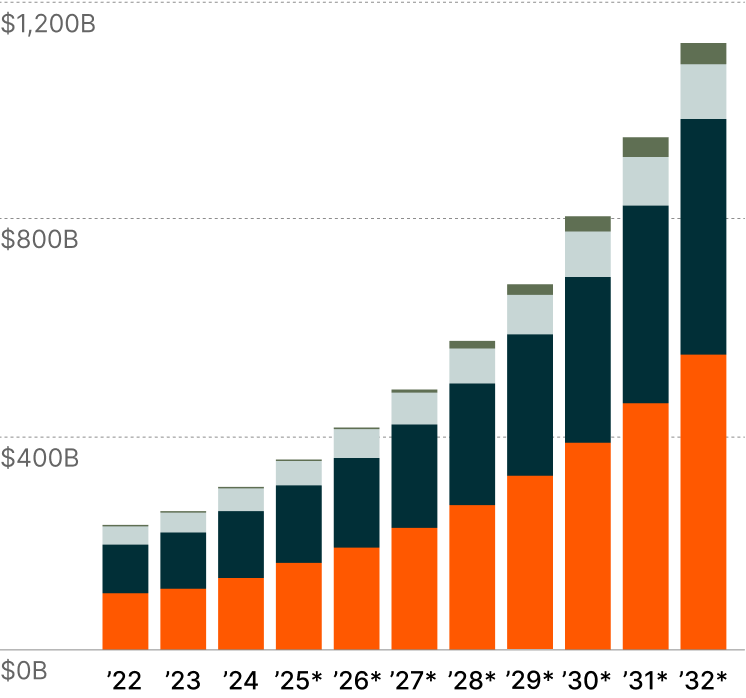
Harnessing Health Data for Collective Intelligence
Improved clinical documentation systems alleviate physicians’ administrative workloads and produce aggregated, anonymized data that powers collective intelligence networks, improving medical decision-making without compromising privacy. This approach consolidates diverse data sources, including electronic medical records, DNA sequencing, wearable technology data, and clinical trial results. These feed into a continuous learning system that benefits from millions of patient encounters across diverse populations.
At the same time, generative AI could transform the 40% of the industry’s work hours that involve language-based tasks, while technology augmentation or automation could potentially reshape 70% of healthcare workers’ duties.7 This represents a fundamental shift from reactive, experience-based medicine toward predictive, data-driven healthcare that can improve patient outcomes while accelerating medical research and discovery.


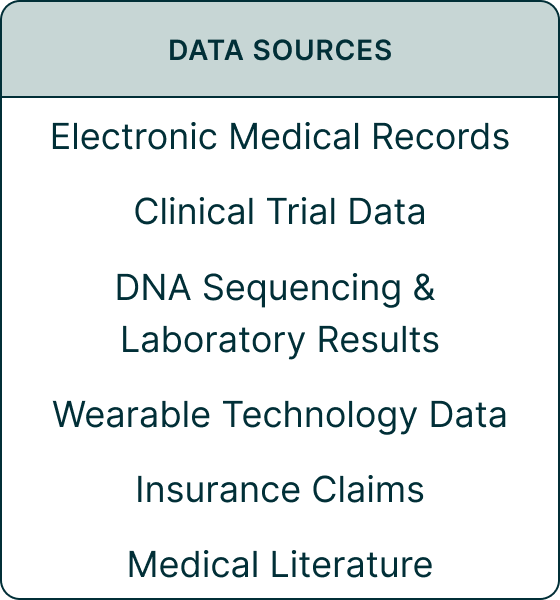
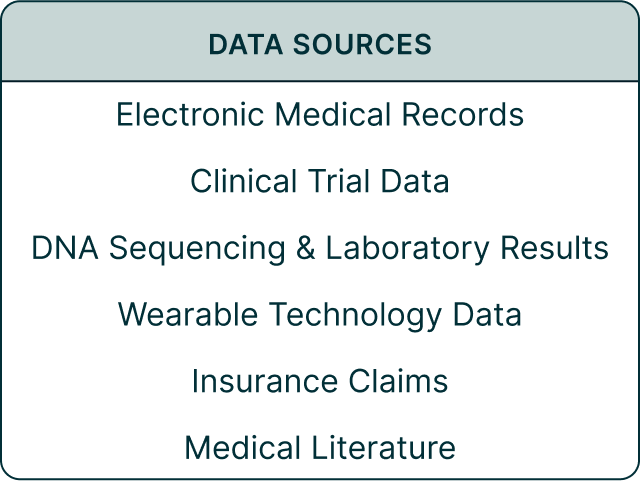


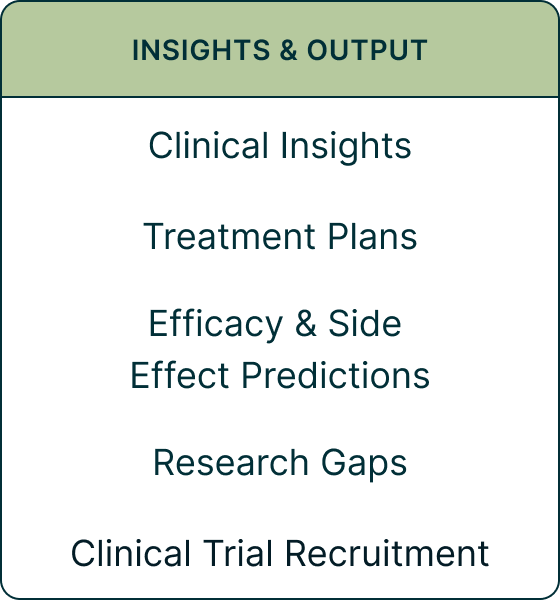
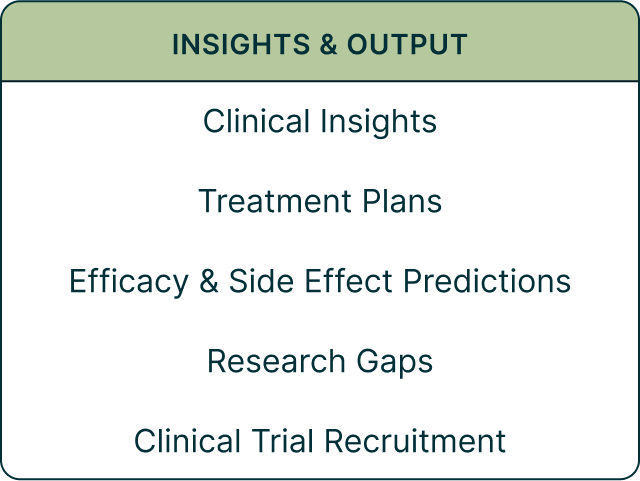
The AI Boom Accelerating Drug Discovery
Industry leaders cite operational efficiency and cost reduction as AI’s primary benefits in drug R&D, with 95% of pharmaceutical companies already investing in AI.8 The technology’s impact spans three distinct categories: core operational improvements, clinical and scientific advantages, and strategic intelligence capabilities.
On average, drugs take 10–15 years and $1.6 billion to develop, while just 10% of investigational treatments gain approval.9 AI can reduce the time to achieve a preclinical drug candidate by 30%–50% and lower costs by up to 50%, while accelerating design and validation by as much as 15x.10 As nearly a third of phase 3 trials fail due to recruitment issues, with 80% of trials missing enrollment deadlines, AI can help identify patients best suited for clinical trials.11 These benefits have positioned AI-enabled drug discovery software as the fastest-growing AI segment through 2032, forecast to expand at a 122% compound annual growth rate.12
Top 3 AI Benefits Across Industry Segments13


Current AI Usage in Pharma14

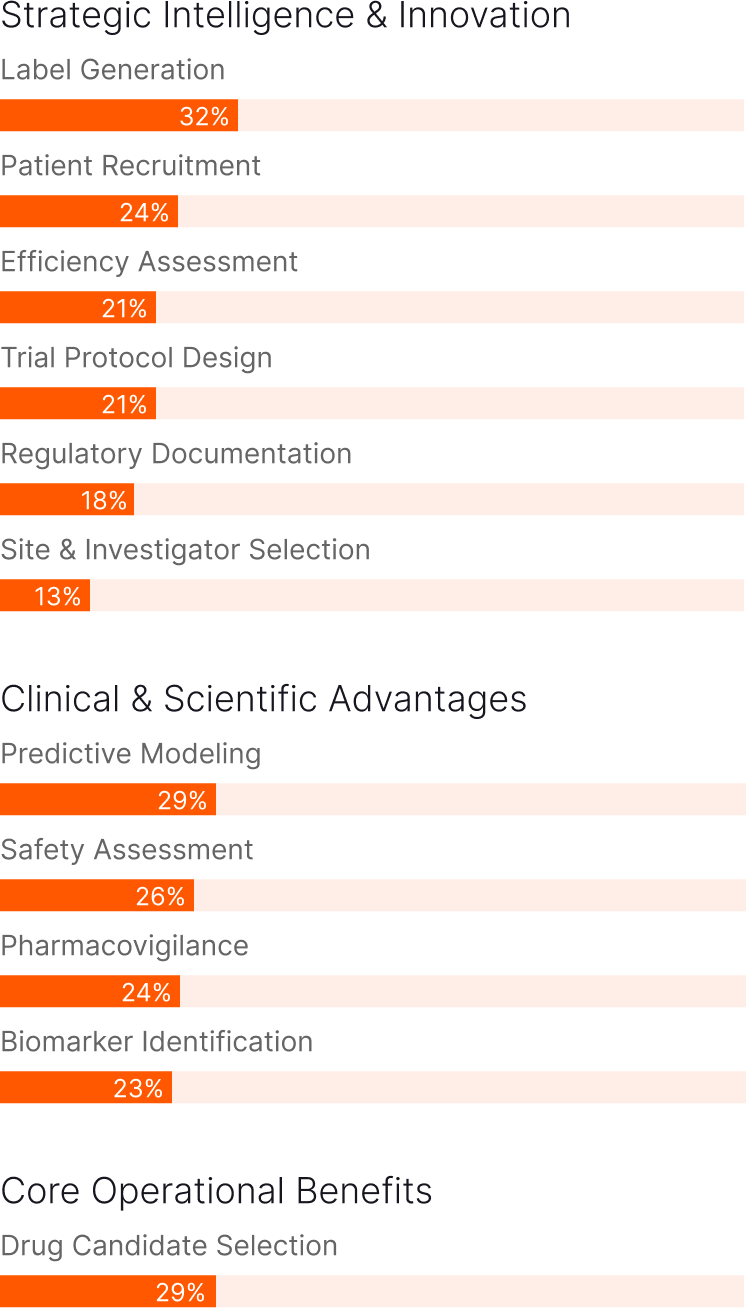
EXPERT TAKEAWAY
“AI is set to transform healthcare — reshaping the patient and practitioner experience, while revolutionizing pharmaceutical R&D. By cutting time and costs in drug development, AI paves the way for safer, more effective treatments and a stronger healthcare ecosystem.”






